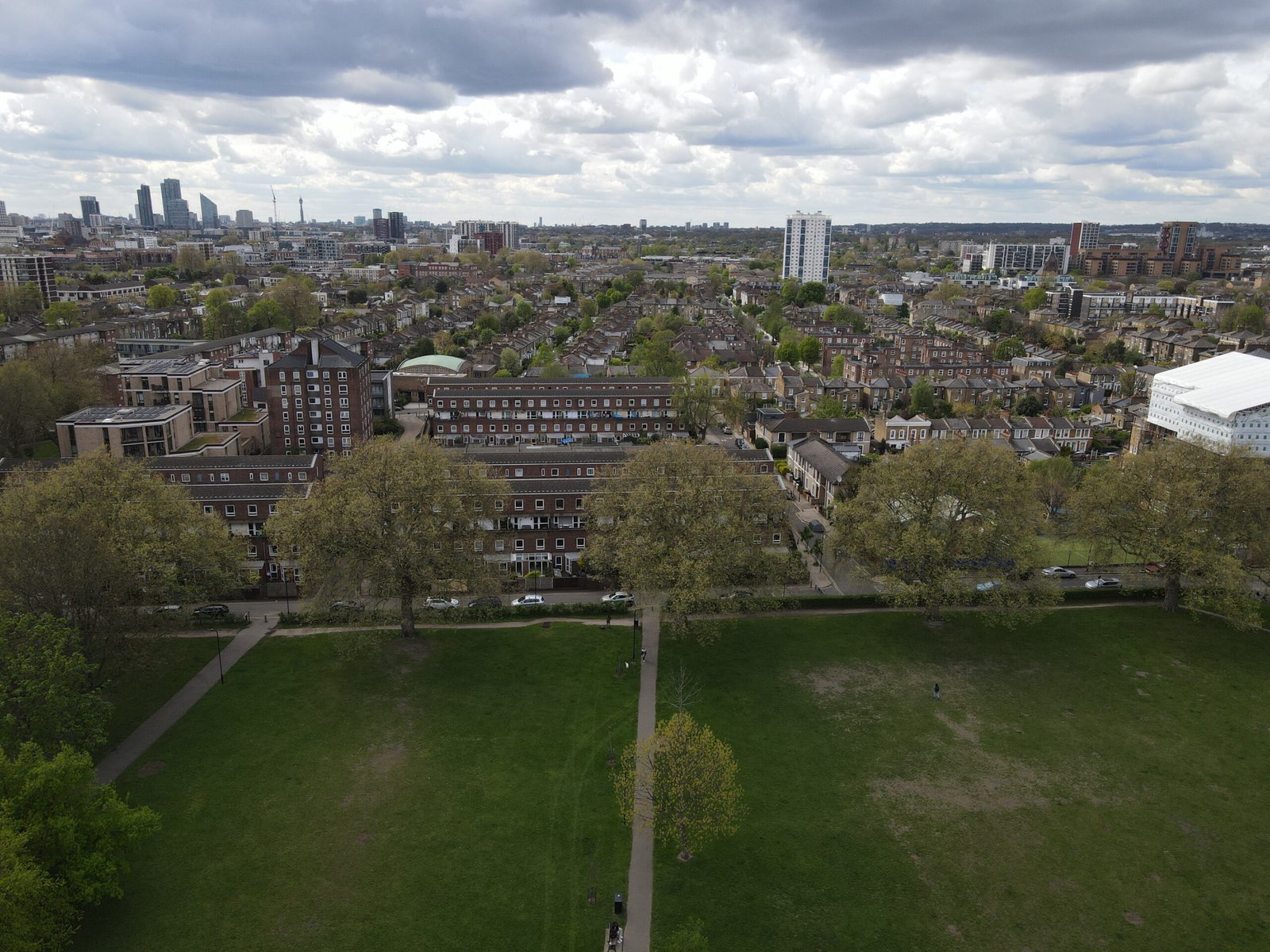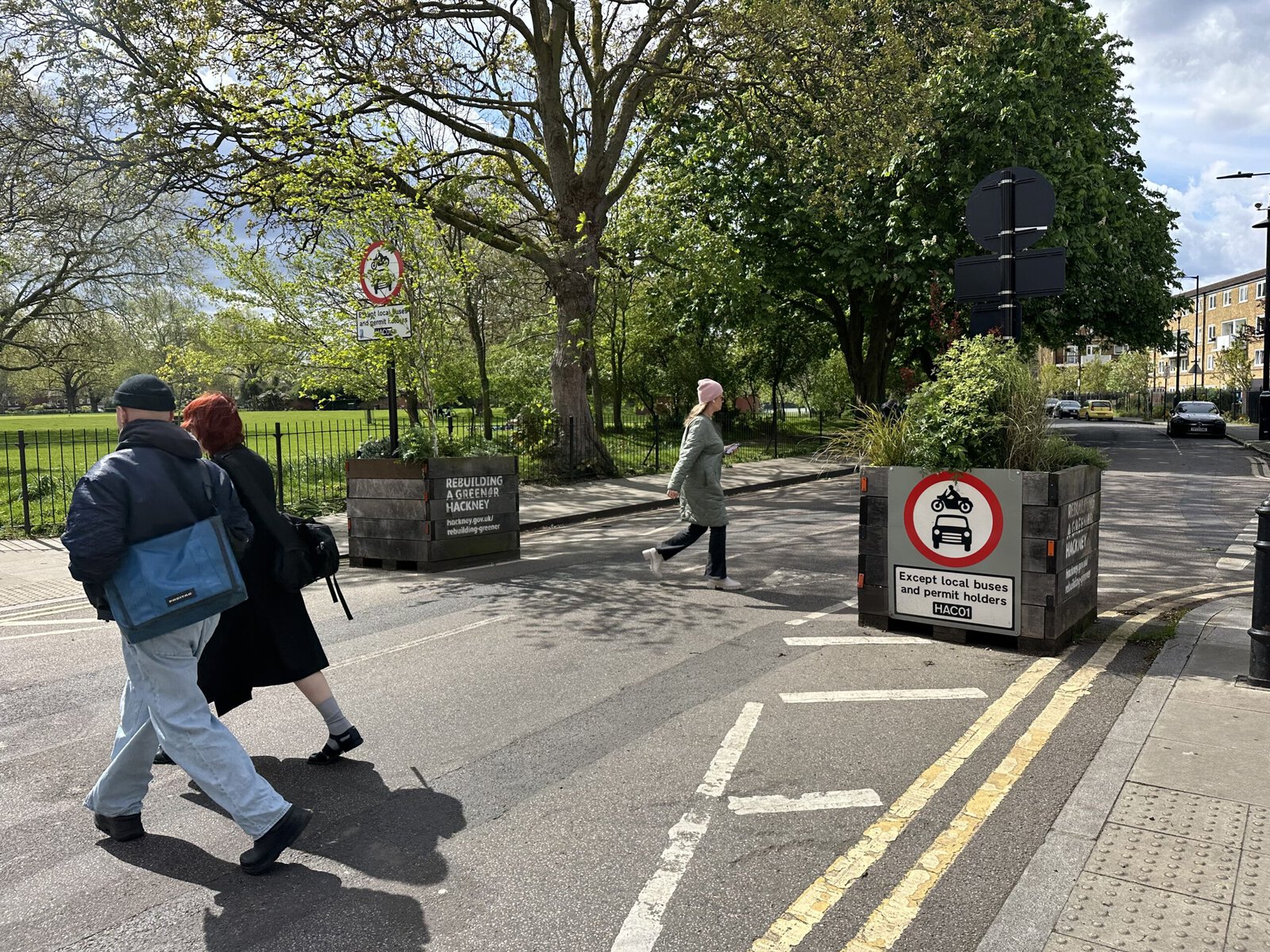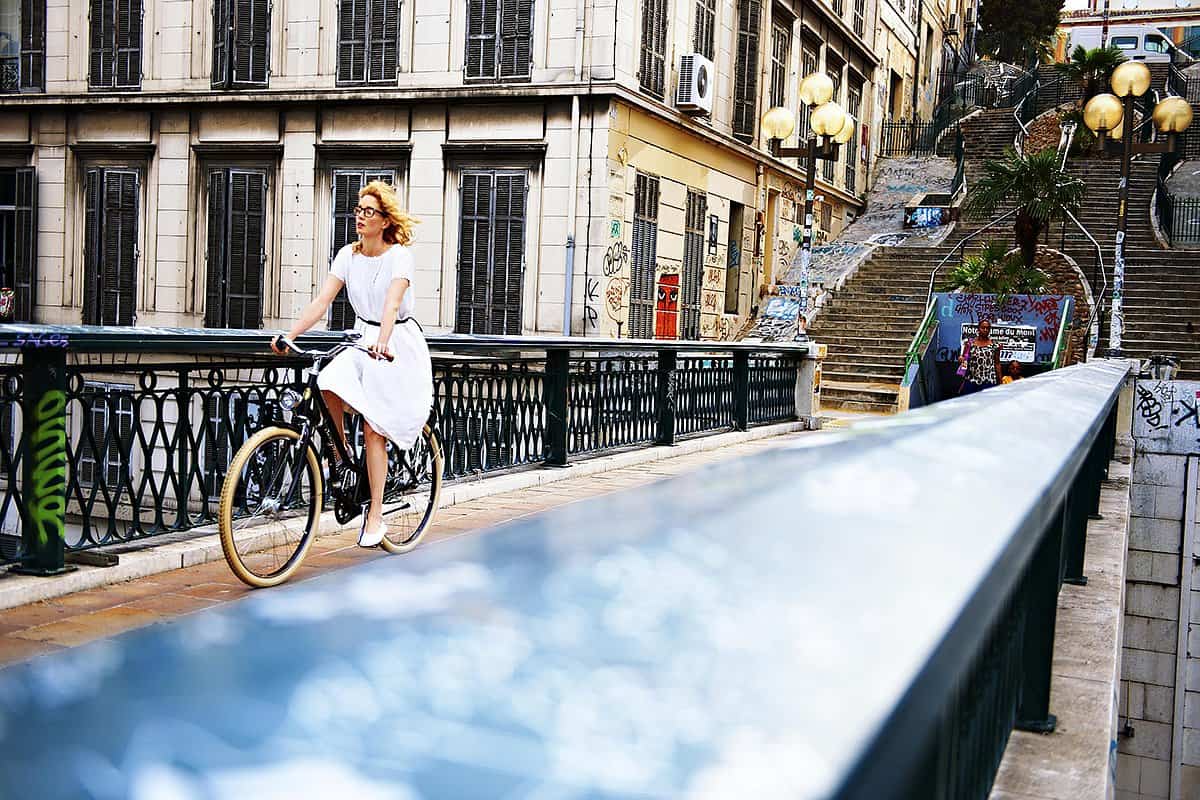This is part two of a three-part series about smart ways cities are solving the problems caused by cars. Read part one here.
During the peak of morning rush hour, the pretty, tree-lined streets along the edge of London Fields, a public park in the northeast of the British capital city, are a scene of springtime calm. Blackbirds twitter. Pedestrians linger. Tulips bathe in the sun.
But just two blocks away, on the A107 road, known as Mare Street for much of its length, the traffic is almost overwhelming. Queues of towering, red double-decker buses, white transit vans and cars full of disgruntled commuters attack the senses.
That stark contrast is largely down to a controversial but effective urban policy that is reclaiming London’s streets from cars: Low-Traffic Neighborhoods, or LTNs.

“The root problem we have is that the road networks are way too oversaturated,” says Jon Burke, who was the cabinet member for transport in Hackney, the borough that is home to London Fields, between 2018 and 2020. “Our neighborhoods were never designed to have through traffic. LTNs are a way of keeping that rat-running out.”
Many cities around the world are trying to make themselves more livable and shift away from cars in the aftermath of the Covid-19 pandemic lockdowns and with the urgent need to adapt to the climate crisis — from the Superblocks in Barcelona to the 15-minute city in Paris — and one of London’s answers to this conundrum is LTNs.
LTNs are, in practical terms, simple. Street planters or other “filters,” such as metal gates or even just monitoring cameras, are used to block traffic from using residential streets. They are strategically placed in order to keep the flow of cars on main roads and away from people’s homes, where noise and air pollution can have a serious impact. Any breaches can lead to fines, but cyclists, emergency vehicles, waste trucks and Blue Badge holders — people who have disabilities — can pass with their exemptions.

Hackney created its first LTN in 1974 in a neighborhood known as De Beauvoir Town following traffic accidents involving children and elderly residents crossing the road. But during the pandemic the borough, which is home to a quarter of a million people spread over about seven square miles, wanted to accelerate its efforts towards having more people- rather than car-led spaces. The mayor of London has set out a goal for 80 percent of all trips in the city to be by foot, bicycle or public transport by 2041.
“Vehicle emissions can blight streets, harming health and contributing to climate change,” said the mayor’s office in a statement. “Creating streets and routes that encourage walking, cycling and public transport use will play a major role in reaching this goal.”
Weighed down by negative news?
Our smart, bright, weekly newsletter is the uplift you’ve been looking for.Hackney has long had high levels of through-traffic due to its position in northeast London, linking the city center to outer boroughs. According to research by Hackney Council, a large proportion of pollution in the borough in 2016 was generated by road traffic — 64 percent of nitrogen dioxide emissions and 25 percent of PM10 (coarse particulate matter) — despite the fact only around 30 percent of residents own cars.
So, Burke pushed ahead with rolling out the LTNs. Today, there are 81 LTNs across Hackney, spanning from the larger examples like London Fields to some that are just a few streets wide. More than 70 percent of the eligible roads in Hackney are now covered, which represents half of Hackney’s total area and the highest of any London borough. In conjunction, Hackney has created more than 40 “Schools Streets” — where vehicles are prohibited from entering during set times in the morning and afternoon.
Map of Hackney’s Low-Traffic Neighborhoods
Elsewhere, LTNs have been called out for mainly benefiting the wealthy. But in Hackney, equality is taken seriously, with all of its LTNs subject to equalities impact assessments. A study published in 2021 found people in Hackney’s new LTNs are “much more likely” to be in the more “deprived” half of the population than in the affluent half. Between 40 and 50 percent of households in Hackney’s LTNs live in social housing.
“I had already planned to do this, but Covid expedited the process,” says Burke. “De Beauvoir was a massive success that we could replicate.”
By the end of 2020, four percent of all Londoners — about 300,000 people — were living in areas covered by the 72 LTNs introduced that year as part of the UK government’s Emergency Active Travel Fund, which gave local authorities funding to start LTNs.
The results have been remarkably positive. According to Hackney Council, traffic has been reduced by 38 percent in its four largest LTNs and by two percent on boundary roads, suggesting that it is not being displaced to other areas — a common criticism of LTNs — but rather that people are switching away from cars. Across all LTNs and surrounding areas, the Council found reductions in nitrogen dioxide levels in 329 of 388 monitoring locations. And a poll of 800 local residents found that one in four people said they have increased the amount of walking, running and cycling they do.
More broadly, a longitudinal study published in March, based on six years of surveys with thousands of people in three outer London boroughs — Enfield, Kingston and Waltham Forest — found people switched from car travel to “active” travel (walking increased by 66.6 minutes and cycling by 21.5 minutes on average). The researchers also estimated that for every £28 t0 £35 ($34 t0 $43) spent on LTNs, there was a public health benefit of £4,800 ($5,987) over a 20-year period. It found that each year 37 deaths and more than 500,000 sick days would be avoided.
“It’s rare that there is a reduction in car use due to policy, but this is one example of that,” says Rachel Aldred, a professor of transport at the University of Westminster and co-author of the study. “It shows traffic is not a thing that just happens. People can do things differently, changing where they shop, how they combine trips.”
A previous study of 10 LTNs by the Centre for London, a think tank, found inside the boundaries, cycle use rose by between 31 percent and 172 percent depending on the LTN, while car traffic fell by between 22 percent and 76 percent. It also found that road injuries halved.
But despite the wealth of evidence backing the traffic-reducing measures, they have become a controversial and politicized issue. In 2021, campaign group Horrendous Hackney Road Closures took the council to court, but their case was thrown out by the High Court. Some LTNs have been removed after pushback. This was the case in the borough of Ealing, where critics claimed that LTNs unfairly penalized those who rely on cars, that they were implemented without community engagement and that LTNs simply displace traffic onto other roads (despite evidence to the contrary).
“The reality is that LTNs are disruptive but hugely successful,” says Burke, who has received smears and even death threats for his efforts. “It’s as close to a gun rights issue as we have in the UK. The key is to deliver policies in an evidence-led way.”
The Centre for London report said that local authorities should “engage early with the public” among other recommendations to help boost public approval. According to Hackney Council, it has adapted LTNs following feedback from locals through public consultations and outreach, such as by increasing the number of exemptions.
Even so, public perceptions of the policy remain mixed in Hackney.
Kathleen Hooper, who was with her granddaughter at a playpark in London Fields, said that the LTNs were an inconvenience for her. “They are closing too many roads,” she said. “They forced it all into one area. Sometimes it’s just quicker to walk.”
But Will Petty, who lives in an LTN known as Hackney Downs, argues that is exactly the point of the policy. “At a stroke overnight, the area became more walkable,” he said. “We have to do something quite drastic about car use across London.”

Nonetheless, overall the LTNs have major public support — 47 percent of Londoners support LTNs, and 16 percent oppose them — and the criticisms appear to be mostly unfounded in the long-term, even though experts say further data is needed.
Going forward, such schemes can be “highly applicable” to other towns and cities if applied to local contexts, according to Burke, but they can only be part of the solution: “More demand-side policies are needed to tackle the overloaded main roads.”
Professor Aldred agrees other policies such as zero emissions buses and congestion charges must continue to be developed as well as increasing the breadth of research about LTNs outside of metropolitan areas, where car use is often higher.
“When it comes to the climate emergency, there’s a lot that needs to be done,” says Aldred.












